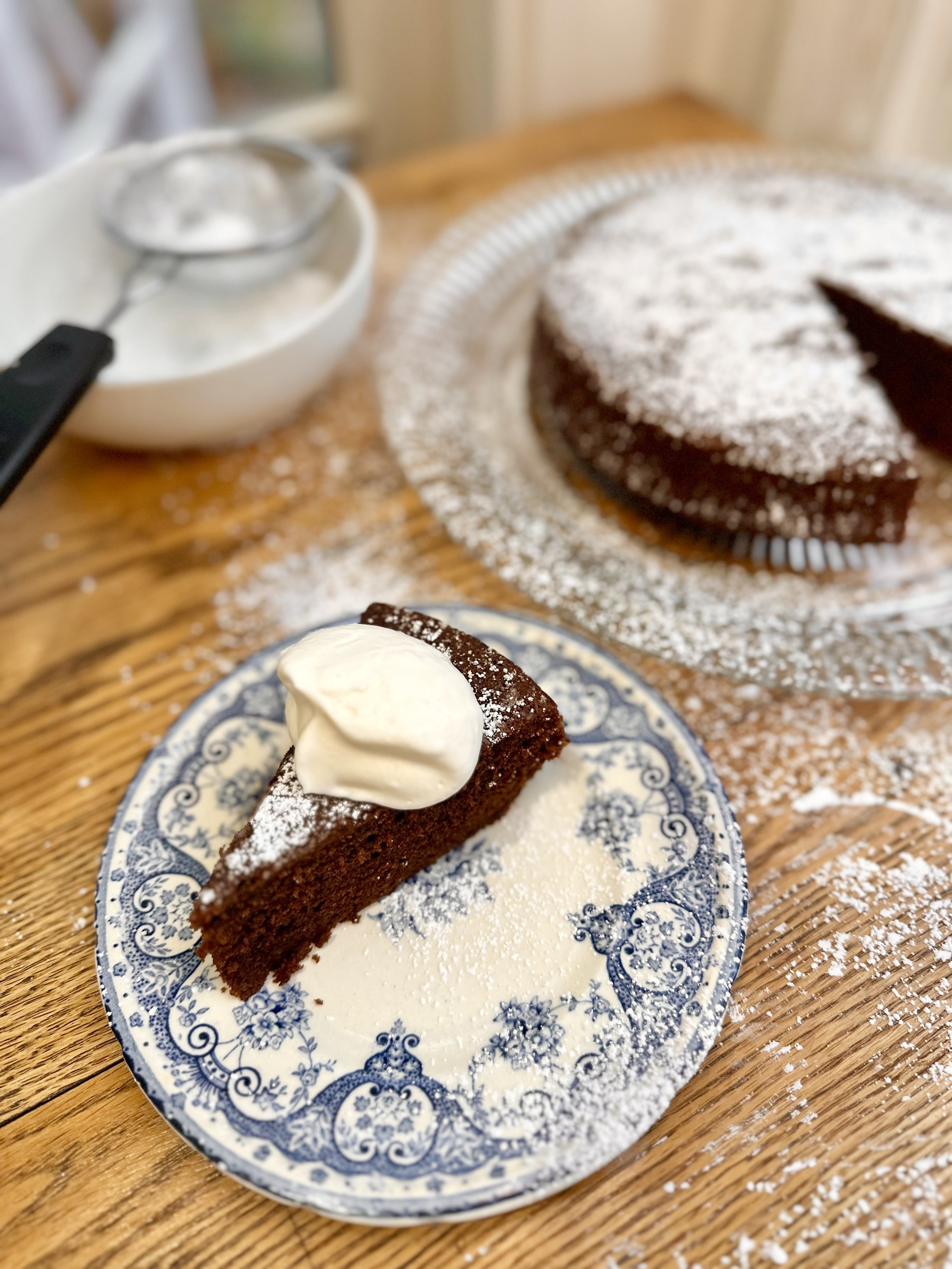Gluten-Free Chocolate Olive Oil Cake
Recipe by Catherine Pla, adapted from Melissa Clark
Serves 8
Gluten-Free Chocolate Olive Oil Cake
1⁄2 c Earl Grey tea (or coffee, orange juice, dry red wine, water)
1⁄2 c Dutch-processed cocoa powder* (I like Guittard)
1⁄4 salt
3⁄4 c extra-virgin olive oil
1 c granulated sugar
3 eggs
2 t vanilla
1 c gluten-free baking mix (I like Bob’s Red Mill 1-to-1), or all-purpose flour if you’re not GF
1⁄2 t baking soda
Confectioners’ sugar for dusting
Preheat the oven to 325 degrees. Butter or spray a 9” cake pan, then cut out a parchment circle and line the bottom of the pan. Set aside.
Heat the tea to a simmer in a medium saucepan, then remove from the heat. Whisk in the cocoa and salt until combined and there are no lumps. Let cool.
Combine olive oil, sugar, eggs, and vanilla and whisk by hand until well combined, about 2 minutes. Whisk in the cocoa mixture. Gradually add the gluten-free baking mix and baking soda and stir until just incorporated.
Scoop the batter into the pan and smooth the top. Bake for 35-40 minutes until a skewer inserted into the middle comes out almost clean. Let cool for 10 minutes, then invert the cake onto a serving plate, remove the parchment circle. Serve right-side up (slightly domed) or inverted (flat top), your choice. When the cake is completely cool, dust with confectioners’ sugar. Serve with whipped cream.
*Difference between natural and Dutch process cocoa powder: In natural cocoa powder (labeled as unsweetened cocoa powder, or pure cocoa powder) the dry cocoa solids remain unprocessed after being ground up. Cocoa beans are acidic and so natural cocoa powder is light brown in color with an almost reddish tint. It tastes sharp, fruity, and bright. In Dutch process cocoa powder, the cocoa beans are soaked before grinding, in an alkali solution that neutralizes the acidity, creating a smoother taste and richer flavor. The color is darker and the flavor deeper. Most European brands (Droste, Valrhona, Guittard) are Dutch process, while most American brands (Hershey’s, Ghirardelli) are not. You can’t always swap one for the other. If a recipe calls for natural cocoa powder and uses baking soda as a leavening agent, the recipe relies on the acidity in the natural cocoa powder to activate the baking soda (baking soda is activated when it comes into contact with acidic ingredients, like yogurt, buttermilk, or natural cocoa powder). If you swapped Dutch process cocoa powder instead, the reduced acidity may not be enough to activate the baking soda, thus causing your cake to fall flat.


